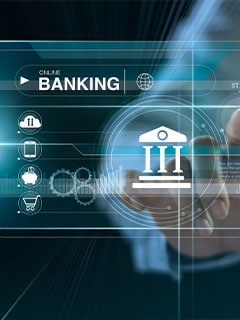CKYC Registry
-
Customer Service Contact us Service request Locate a branch
Find all the help you need
Scan the QR, get our app, and find help on your fingertips

Help CenterSupport topics, Contact us, FAQs and more
-
Login
Are you ready for an upgrade?
Login to the new experience with best features and services
-
Login
Are you ready for an upgrade?
Login to the new experience with best features and services
- Accounts
-
Deposits
IDFC FIRST Bank Deposits
View all Deposits -
Loans
IDFC FIRST Bank Loans
View all Loans - Wealth & Insure
-
Payments
IDFC FIRST Bank Payments
View all Payments -
Cards
IDFC FIRST Bank Cards
View all Cards - Blogs
- Corporate Account
-
Cash Management Services
IDFC FIRST Bank Cash Management Services
View all Cash Management Services - Supply Chain Finance
-
Corporate Lending
IDFC FIRST Bank Lending
View all -
Treasury
IDFC FIRST Bank Treasury
See more details - NBFC Financing
Support topics, Contact us, FAQs and more
- IDFC FIRST Bank Accounts
-
Savings Account
-
Corporate Salary
Account -
Senior Citizens
Savings Account -
First Power
Account -
Current Account
-
NRI Savings
Account -
TASC Institutional
Account -
Savings Account
Interest Calculator
- IDFC FIRST Bank Deposits
-
Fixed Deposit
-
Recurring Deposit
-
NRI Fixed Deposit
-
Safe Deposit Locker
-
FD Calculator
-
RD Calculator
- IDFC FIRST Bank Loans
-
Personal Loan
-
Consumer Durable
Loan -
Home Loan
-
Business Loan
-
Professional Loan
-
Education Loan
-
New Car Loan
-
Pre-owned Car Loan
-
Two Wheeler Loan
-
Pre-owned Two
Wheeler Loan -
Commercial Vehicle
Loan -
Gold Loan
-
Loan Against Property
-
Loan Against Securities
-
Easy Buy EMI card
-
Personal Loan
EMI Calculator -
Education Loan
EMI Calculator -
Home Loan
EMI Calculator
- IDFC FIRST Bank Wealth & Insure
-
FIRST Select
-
FIRST Wealth
-
FIRST Private
-
Mutual Funds
-
Sovereign Gold Bond
-
Demat Account
-
Term Insurance
-
Life Insurance
-
Health Insurance
-
General Insurance
-
Bonds
-
Loan Against
Securities -
Portfolio Management
Service
- IDFC FIRST Bank Payments
-
FASTag
-
Credit Card
Bill Payments -
UPI
-
Funds Transfer
-
Forex Services
-
Pay Loan EMI
- IDFC FIRST Bank Cards
-
Ashva :
Metal Credit Card -
Mayura :
Metal Credit Card -
FIRST Millennia
Credit Card -
FIRST Classic
Credit Card -
FIRST Select
Credit Card -
FIRST Wealth
Credit Card -
FIRST WOW!
Credit Card -
Deals
-
Debit Cards
-
Co-branded Cards
-
Credit Card
EMI Calculator -
FIRST Corporate
Credit Card -
FIRST Purchase
Credit Card -
FIRST Business
Credit Card
- Premium Metal Credit Cards
-
AshvaLifestyle1% Forex₹2,999
-
MayuraLifestyleZero Forex₹5,999
-
FIRST PrivateInvite Only
- Best for travellers
-
MayuraZero ForexMetal₹5,999
-
Ashva1% ForexMetal₹2,999
-
FIRST WOW!Zero ForexTravelLifetime Free
-
FIRST SWYPTravel OffersEMI₹499
-
FIRST Select1.99% ForexLifestyleLifetime Free
-
FIRST Wealth1.5% ForexLifestyleLifetime Free
-
Club VistaraTravelLifestyle₹4,999
-
IndiGo IDFC FIRST Dual Credit CardTravelLifestyle₹4,999
- Max benefits, Free for life
-
FIRST Classic10X RewardsShoppingNever Expiring Rewards
-
FIRST Millennia10X RewardsShoppingNever Expiring Rewards
-
FIRST Select10X RewardsLifestyle1.99% Forex
-
FIRST Wealth10X RewardsLifestyle1.5% Forex
-
FIRST WOW!RewardsTravelZero Forex
-
LIC ClassicRewardsInsuranceShopping
-
LIC SelectRewardsInsuranceShopping
- Reward Multipliers
-
AshvaLifestyleMetal₹2,999
-
MayuraLifestyleZero Forex₹5,999
-
FIRST ClassicNever Expiring RewardsShoppingLifetime Free
-
FIRST MillenniaNever Expiring RewardsShoppingLifetime Free
-
FIRST SelectNever Expiring RewardsLifestyleLifetime Free
-
FIRST WealthNever Expiring RewardsLifestyleLifetime Free
- Rewards & Credit on UPI
-
FIRST Power+FuelUPI₹499
-
FIRST PowerFuelUPI₹199
-
FIRST EA₹NVirtual1% Cashback₹499
-
FIRST DigitalVirtualUPI₹199
-
IndiGo IDFC FIRST Dual Credit CardUPITravelDual cards
- Fuel and Savings
-
FIRST PowerRewardsUPI₹199
-
FIRST Power+RewardsUPI₹499
-
LIC ClassicRewardsInsuranceShopping
-
LIC SelectRewardsInsuranceShopping
- Express and Flaunt
-
AshvaMetal1% Forex₹2,999
-
MayuraMetalZero Forex₹5,999
-
FIRST SWYPEMIOfferMAX₹499
-
FIRST MillenniaRewardsShoppingLifetime Free
- FD Backed rewarding Credit Cards for all
-
FIRST EA₹NVirtualCashback₹499
-
FIRST WOW!Zero ForexTravelLifetime Free
-
CreditPro Balance TransferTransfer & SaveReduce InterestPay Smartly
- IDFC FIRST Bank NRI Forex Solutions
-
Send money to India-Wire transfer
-
Send money to India-Digitally
-
Send money abroad
-
Max Returns FD (INR)
- IDFC FIRST Bank MSME Accounts
-
Platinum Current
Account -
Gold
Current Account -
Silver Plus
Current Account -
Merchant Multiplier
Account -
Agri Multiplier
Account -
TASC Institutional
Account -
Dynamic Current
Account -
World business
Account -
First Startup
Current Account
- IDFC FIRST Bank Business Loans
-
Business Loan
-
Professional Loan
-
Loan Against Property
-
Business Loan for Women
-
Working Capital Loan
-
Construction Equipment Loan
-
Machinery Loan
-
Healthcare Equipment Loan
- IDFC FIRST Bank Business Solutions
-
Payment Solutions
-
Tax Payments
-
Doorstep Banking
-
Point of Sale (POS)
-
Escrow Accounts
-
NACH
-
Payment Gateway
-
UPI
-
Virtual Accounts
-
As per amendment in the Income Tax Rules, PAN or Aadhaar are to be mandatorily quoted for cash deposit or withdrawal aggregating to Rupees twenty lakhs or more in a FY. Please update your PAN or Aadhaar. Kindly reach out to the Bank’s contact center on 1800 10 888 or visit the nearest IDFC FIRST Bank branch for further queries.
-
-
Most Searched
Sorry!
We couldn’t find ‘’ in our website
Here is what you can do :
- Try checking the spelling and search
- Search from below suggestions instead
- Widen your search & try a more generic keyword
Suggested
Get a Credit Card
Enjoy Zero Charges on All Commonly Used Savings Account Services
Open Account Now
The financial segment has rarely seen a domain as competitive as banking. Over the years, banks have moved ahead from just offering traditional deposit and withdrawal services to providing additional facilities like loans, credit cards, remittances, refer and earn program and advisory services.
However, much more needs to be done if banks are to survive in the digital era. With the rise of the informed customer, banks need to transition from customer-focused to customer-obsessed. It has already been established that a great customer experience is more than a 'nice to have' for customer-obsessed banks; it's a profit driver and a source of long-term value for shareholders. Clearly, customers' loyalty and long-term connections offer the finest foundation for future success.
Pivoting to a customer-obsessed culture
Traditional banking operations were too product-focused, leading to siloed processes. This resulted in the customer journey becoming fragmented, without clear end goals. As banks move towards customer-centricity, their focus should not be on just selling the product. They should provide the right solutions to the existing problems of the customers and provide value to them in the long term.
A customer-obsessed bank can start by rethinking the customer journey to align with the aspirations and expectations of consumers. To do so, the bank can dig into the gold mine of information that is customer data. By leveraging this data, banks can identify pain points and buying triggers, create buying outcomes and eliminate constraints like lack of information or time limits.
This is making banks experiment with concepts like open banking. The idea behind the concept is to improve the customer experience by leveraging integrated systems.
READ MORE
What is Open Banking?
The rise of fintech has been phenomenal in recent years, making traditional banking systems redundant. It is expected that the global fintech market will grow at a CAGR of 23.58% between 2021 and 2025.
Banks can use the power of open banking to compete with both small and large fintech players. Open banking is an agile framework that brings a multitude of benefits. An open banking system leads to direct transactions between customers and third-party businesses. As a collaborative approach, banks can enable cross-platform payments. Thus, banks can build better relationships with their partner organizations and create mobile-centric customer platforms.
This concept involves sharing the financial and banking data of customers with third-party organizations. Banks offer this data to their partner organizations through Application Program Interfaces (APIs). There are no privacy concerns for account holders as they provide their consent.
Ultimately, the focus is on making the customer experience worthwhile. No wonder then, in a 2020 global banking survey conducted by The Economist Intelligence Unit, open banking was a top priority for almost one-third (32%) of the respondents.
How is open banking a win-win situation for customers?
With the help of open banking, established players and new intermediaries can provide significant benefits to consumers by consolidating their financial products in one location, providing fresh insight into spending patterns, generating money-saving recommendations, automating elements of the decision-making process, and even introducing new methods to pay. Thus, some of the benefits of open banking for consumers are:
- Offers more choices: Banks usually have the same set of services for all their customers. Open banking allows them to experiment and give personalized offerings from various service providers.
- Enables payments on the go: Open banking APIs make it possible for users to pay from their mobile phones at any time and anywhere. There is no need to visit a physical store or carry hard cash when purchasing anything.
Digital payments were already up by 30.2% in FY21, according to RBI. This trend shows the growing importance of apps like PayTM and Google Pay, made possible by using open banking. - Makes remittance and foreign exchange transactions easier: The pace of global migration has increased significantly in the years. Though the coronavirus pandemic slowed things, it does not spell the end of this trend, since countries are opening up again and lifting restrictions. Consequently, money will start flowing between migrants and their families back home. Money transfer and remittance services by banks were always slow and expensive. The rise of fintech is helping overcome this problem. Third-party services offered by banks, as part of open banking, provide a seamless way for anyone to send or exchange money quickly and at a low cost.
- Enables personalized offerings for customers: Open Banking makes it possible for banks to offer customized services to customers. For example, if paying bills remotely is a priority for someone, they can access the related services right on their mobile app.
Benefits of open banking for banks
With the help of open banking, the financial industry as a whole is adopting a hyper-relevant, platform-based distribution model. For banks, this means a chance to expand their ecosystems and reach. Here are some of the benefits that banks can hope to achieve by embracing open banking.
- Increased collaboration: The collaborative approach enables banks to remain highly competitive in their space. They can partner with relevant third-party businesses that align with their goals and help them succeed.
- Better customer engagement: Banks can engage with their customers better by understanding their needs in a holistic manner. Customers are more likely to trust an institution that helps them manage their finances better.
- Increased fraud prevention: Frauds can be in multiple forms, including identity theft and unauthorized use of credit cards. Access to real-time data, combined with Machine Learning tools, help banks overcome this problem.
- Better workforce management: Banks can assign their staff to monitor high-risk customers with the help of open data. It helps them prevent bad debts and use resources efficiently.
- Enhanced agility: Open banking provides banks with heightened digital agility, increasing their capacity to react to change and implement solutions quickly. Open banking removes obstacles to communication and collaboration for banks, allowing them to adapt their business models more effectively.
Conclusion
While it's possible that compliance is driving banks to invest in open banking, there's no denying that the movement offers a slew of other financial benefits. The customer lifetime value is raised due to many of these benefits, such as immediate improvements in customer happiness and digital agility, enhanced security, increased collaboration opportunities. Ultimately, it allows banks to make bigger bets with their financial products and services.
Disclaimer
The contents of this article/infographic/picture/video are meant solely for information purposes. The contents are generic in nature and for informational purposes only. It is not a substitute for specific advice in your own circumstances. The information is subject to updation, completion, revision, verification and amendment and the same may change materially. The information is not intended for distribution or use by any person in any jurisdiction where such distribution or use would be contrary to law or regulation or would subject IDFC FIRST Bank or its affiliates to any licensing or registration requirements. IDFC FIRST Bank shall not be responsible for any direct/indirect loss or liability incurred by the reader for taking any financial decisions based on the contents and information mentioned. Please consult your financial advisor before making any financial decision.
The features, benefits and offers mentioned in the article are applicable as on the day of publication of this blog and is subject to change without notice. The contents herein are also subject to other product specific terms and conditions and any third party terms and conditions, as applicable. Please refer our website www.idfcfirstbank.com for latest updates.






















